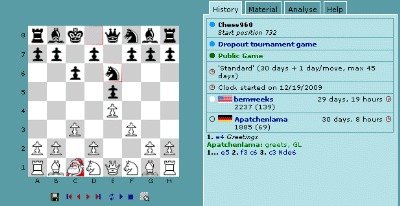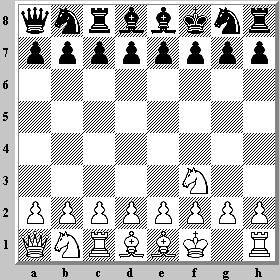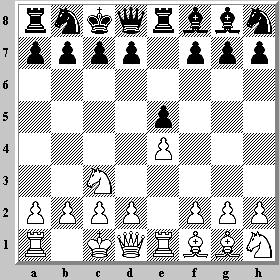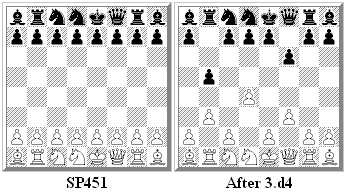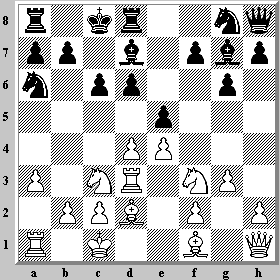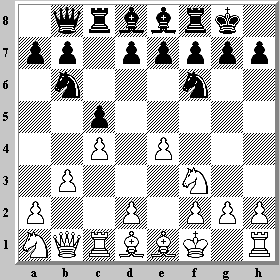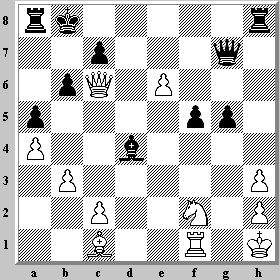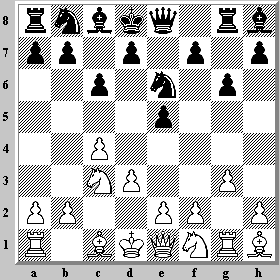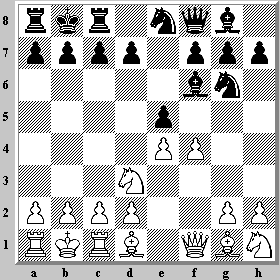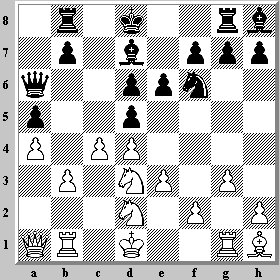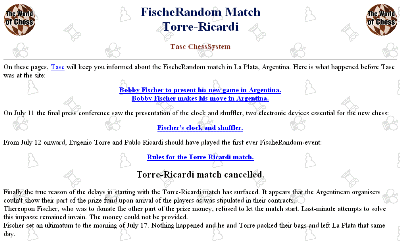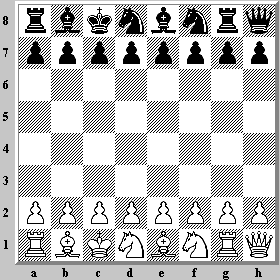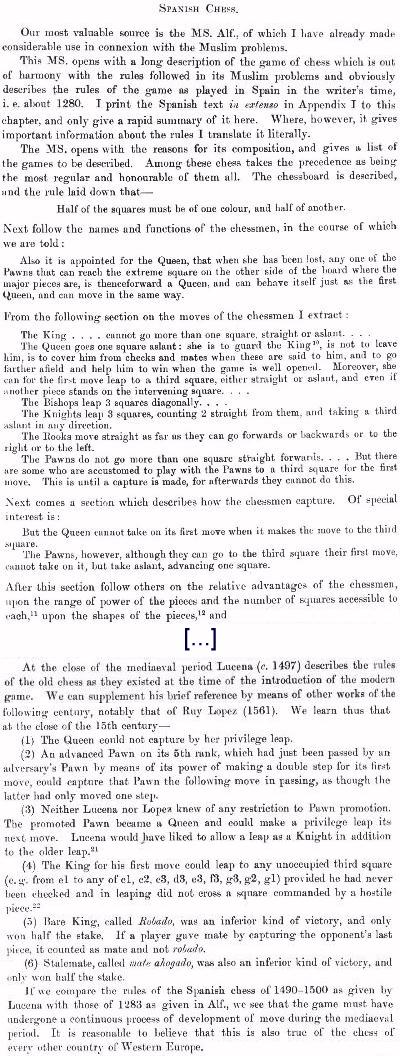I doubt that anyone can give a real reason why
SP518 (RNBQKBNR) is the accepted start position for a game of chess, rather than
SP534 (RNBKQBNR), shown in the following diagram. The only difference between the two positions is that the Kings and Queens are switched. Both SP518 and SP534 have the 'royalty' located in the center and both have the other pieces starting in a formation that, given the moves of those pieces, is superbly logical.
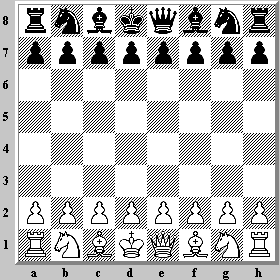
Start Position 534
Considering the two start positions objectively, there is no real reason why the Queen should start 'on her color'. The rule could be stated just as easily 'King on his color'. The start positions of the two pieces is an arbitrary decision that makes no real difference one way or the other. If the rules of chess had been codified as 'King on his color', chess opening theory would have developed exactly as it has over the last two centuries, and all of our chess books would have opening diagrams reflecting the switch in the positions of the Kings and Queens.
In chess960 the two start positions SP518 and SP534 are not equivalent. As I pointed out in A Database of Chess960 Start Positions,
SP534 is not a simple mirror image of SP518, the traditional start position. When castling O-O or O-O-O in SP534, the King and Rook end up on exactly the same squares as they do when castling in SP518: e.g. after castling O-O, the Rook ends on f1 and the King ends on g1.
It might not be as obvious as the case with the start positions of the King and Queen, but the rules of castling in chess also contain a big dose of arbitrariness. Suppose the castling rule in traditional chess were defined as follows:-
- when castling O-O, the King ends on f1, the Rook on e1;
- when castling O-O-O, the King ends on b1, the Rook on c1.
Other than the observation that it is a little easier to state the informal rule that we use to describe the castling move -- 'the King moves two squares toward the Rook and the Rook hops over the King' -- the new castling rule is just as logical as the traditional rule. The new rule could be stated informally as 'the King moves one square toward the Rook on the Kingside or three squares toward the Rook on the Queenside, and the Rook hops over the King'.
If you've thought about the castling rule in traditional chess ('two squares toward the Rook'), you probably realized that castling to the two sides does not produce identical positional considerations. Castling O-O-O has the advantage that the Rook ends up on a center file (the d-file), while castling O-O has the advantage that the King is located closer to the corner where it is a little safer. After castling O-O-O, a second move (Kc1-b1) is often played to move the King closer to the corner, while after castling O-O, a second move (Rf1-e1) is often played to bring the Rook to a center file. In either case, achieving the full advantages of castling -- safety the King and activate a Rook -- often requires an additional move. (*)
Looking the same way at the new castling rule ('one square toward the Rook on the Kingside or three squares on the Queenside'), the relative merits of the two types of castling have reversed. Castling O-O-O requires an additional move to bring the Rook to the center, while castling O-O requires an additional move to bring the King toward the corner.
Now let's say we define a variant where (a) we always start RNBQKBNR, but (b) in half the games we castle using the rule 'two squares toward the Rook', while in the other half we castle using the rule 'one square toward the Rook on the Kingside or three squares on the Queenside'. We have in fact defined a game where we play SP518 in half of the games and SP534 in the other half of the games. This is because our new castling rules have created a perfect mirror of SP534, with the King always starting on e1 instead of d1.
Looking at the other 958 start positions in chess960, it's easy to see that exactly half of the positions are mirrors of the other half, where the only real difference is the castling rule. We could just as easily have defined a game where (a) the King always starts on the Kingside, but (b) in half the games we respect traditional castling (O-O ends Kg1 and Rf1, O-O-O ends Kc1 and Rd1) while in the other half we use new castling (O-O ends Kf1 and Re1, O-O-O ends Kb1 and Rc1). This would result in exactly the same game as chess960, the sole difference being that the King always starts on the Kingside!
I'm not suggesting that anyone play using this half-and-half castling rule. I can imagine endless debates about which castling rule is actually in use for a specific game. What I'm suggesting is that chess960 is really chess480*2, where '*2' (meaning 'times two') denotes the two castling variants. Even if we were to restrict the number of start positions to two -- SP518 and SP534 -- we would have essentially doubled the number of opening variations available to us in traditional chess.
To repeat the point of my previous post, Chess960 Is an Evolution of Chess. It removes the arbitrariness of traditional chess rules, thereby increasing the complexity of the opening phase.
***
(*): Of course, the full range of positional considerations behind castling is more complicated than what I've stated. After castling O-O, the Rook might be better placed on a square other than e1, just as after castling O-O-O, the Rook might be better placed on a square other than d1. Similar considerations apply to the best square for the castled King. These complications don't change the direction of my argument; they just show how subtle chess (or chess960) can be.
